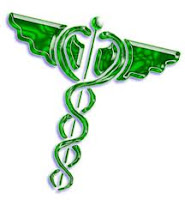Specifications and needs assessment - The computer in the ward: a study of user needs [2]

3.1 Activity Services
3.1.1 Activity Assay
All four units totaling 211 beds potential is approximately 6,600 hospitalizations and 32,800 annual consultations (1987 figures). Table 2 presents details of the activity, and the three diagnoses most frequently encountered in service. In both services, as the diagnosis noted frequently represented less than 10% of all diagnoses recorded at the end of hospitalization (Table 2). These are general surgery, from which emerge two centers of activity rather than the primary diagnosis: the Cancer of the gastrointestinal tract (13 'X Diagnostics) and the parietal pathology, diagnosis single most common being that of femoral neck fracture (with only 6%), and Digestive Diseases Service, where five most common diagnoses (recto-colic polyps, irritable bowel syndrome, gastro-duodenal ulcer, cirrhosis alcoholic and abdominal colic) does not exceed 5% respectively of all diagnoses recorded.
In the other two services, however, three main diagnoses represent over 40% of diagnoses noted. This is for the service of Cardiology, coronary artery disease, valvular disease and disorders of the heart rate, and in the service of Vascular Pathology, diagnosis of arterial disease, or syndrome Raynaud's disease and venous thrombosis.
3.1.2 Tansactions for further investigations
The results appear in Table 3. The evaluation of the number of transactions, trying to estimate the number of applications for examinations, regardless of the extent of the acts themselves, was obtained by taking account the sum of the key letters from column 2. The annual number of transactions for all four services varies in a wide range: 50 for Toxicology, about 68,500 for biochemistry. With this laboratory, the flow averaging 89 transactions per day and 100 beds.
3.2 Applications existing IT
All services had analyzed in the study of a micro-computer hardware (an average of 2 micro-computers IBM PC / PS, IBM compatible or Apple, by service). The applications of micro-information common to all four services are focused on managing records of patients (allowing management appointments and reconvening), activity statistics service (usually with coding or primary diagnosis), and word processing (particularly oriented publishing reports hospitalization or specialized exploration). There are more dedicated applications, especially for Management sheets pacemaker Cardiology, or the analysis of pH-metry in Digestive Pathology.
3.3 Needs expressed by users
3.3.1 Participation of users in the survey
Overall, rates of participation in this survey are quite satisfactory for medical, and for the secretaries, as above 62.5%. Para-medical personnel (especially nurses and aides) have less cons by participating in the survey (21.7% only), probably by a defect Information on the objectives and content of the questionnaires.
3.3.2 Categories of staff and needs assessment
Table 4 shows the average response for all 4 courses and each class of staff concerned. The categories of personnel are presented in four categories: permanent doctors (Hospital physicians, clinical leaders), non-permanent doctors (Attached, internal, medical students) nurses (supervisors, nurses, aides) and secretaries (administrative, medical or academics). For each item are listed the average rating and standard deviation for each group, and the overall average. The comparison between groups was performed by ANOVA test.
The results showed an overall average rating higher than 5 / 10 (median = 6.7), although the group nurse quoted a little more harshly than other categories. We notice more significant dispersion results, as evidenced by the generally high values of standard deviation, in effect, the scores range from 0 to 10 for all items, and in all groups (except for items "civil status" and "archives local "in the group of secretaries).
We can highlight certain features for which the computer all categories Personal agrees, either as a priority or, alternatively, as non-priority goal. The priority functions are as follows: the search for prior art, communication of test results Further, the management and publishing of mail, the daily management of the case, the requirements medical examinations and requests for bedside (grades greater than or equal to 7.0). Functions are considered non-priority access to databases or systems for decision support medical bed management and management of technical facilities, administrative statistics (Notes less than or equal to 5.9).

